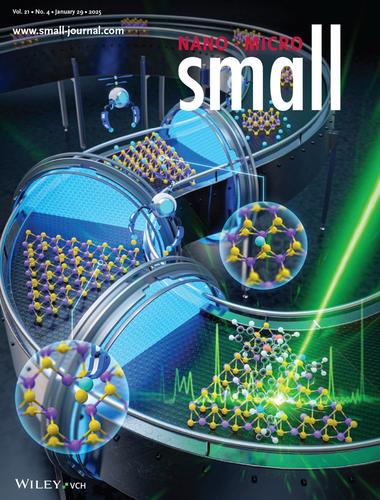Atomic Basal Defect-Rich MoS2 by One-Step Synthesis and Mechanism Exploration (Small 4/2025)
IF 13
2区 材料科学
Q1 CHEMISTRY, MULTIDISCIPLINARY
引用次数: 0
Abstract
2D MoS2
In article number 2404684, YingJiao Zhai, FuJun Liu, Sophie Laurent, and co-workers synthesized atomic basal defect-rich MoS2 in one step and investigated the dual-stage role of NaCl in basal defect formation. The activation of the inert basal plane enhanced the SERS detection of R6G and offers a new strategy for introducing basal defects in other 2D TMDs.


求助全文
约1分钟内获得全文
求助全文
来源期刊

Small
工程技术-材料科学:综合
CiteScore
17.70
自引率
3.80%
发文量
1830
审稿时长
2.1 months
期刊介绍:
Small serves as an exceptional platform for both experimental and theoretical studies in fundamental and applied interdisciplinary research at the nano- and microscale. The journal offers a compelling mix of peer-reviewed Research Articles, Reviews, Perspectives, and Comments.
With a remarkable 2022 Journal Impact Factor of 13.3 (Journal Citation Reports from Clarivate Analytics, 2023), Small remains among the top multidisciplinary journals, covering a wide range of topics at the interface of materials science, chemistry, physics, engineering, medicine, and biology.
Small's readership includes biochemists, biologists, biomedical scientists, chemists, engineers, information technologists, materials scientists, physicists, and theoreticians alike.
 求助内容:
求助内容: 应助结果提醒方式:
应助结果提醒方式:


